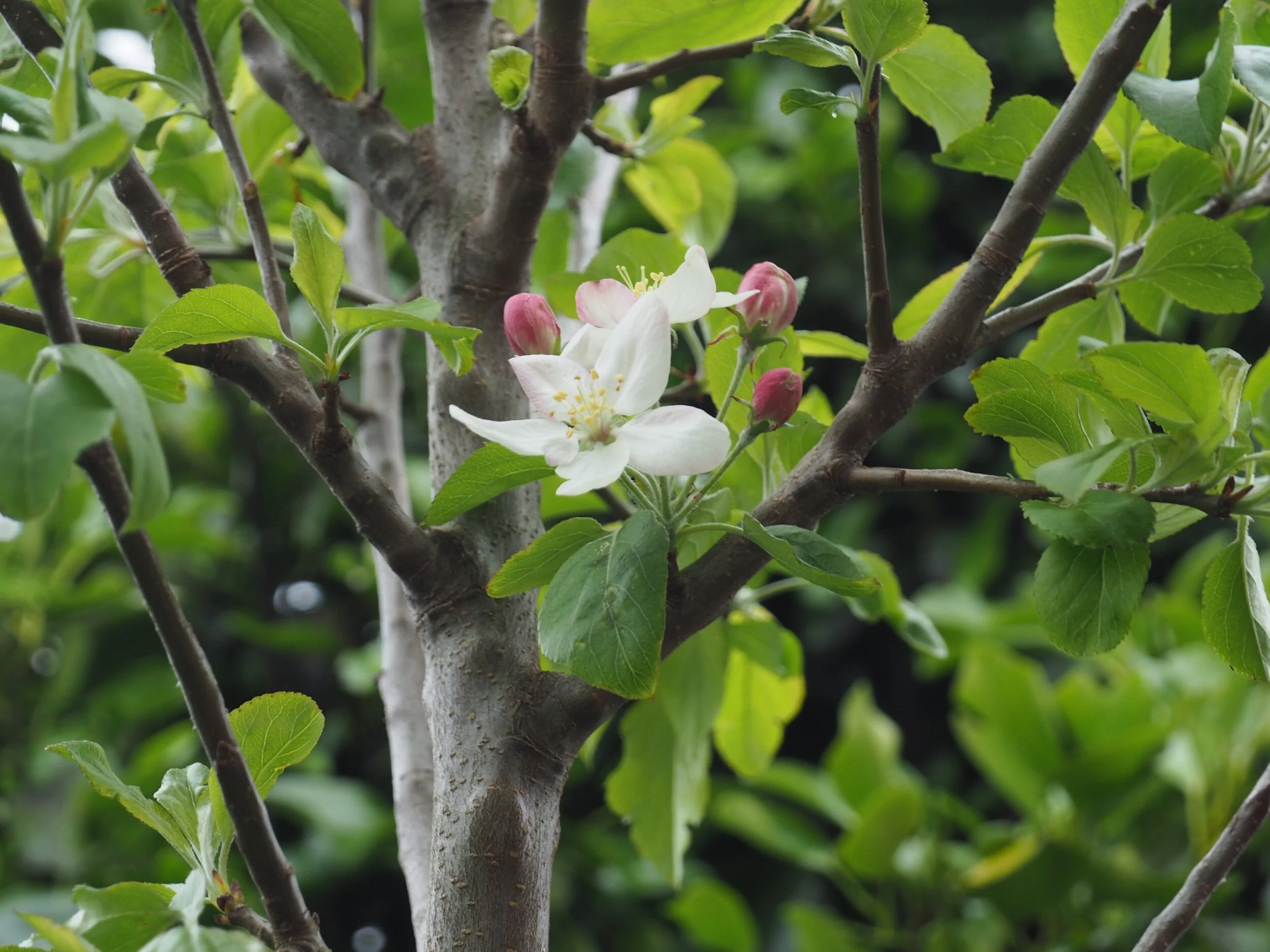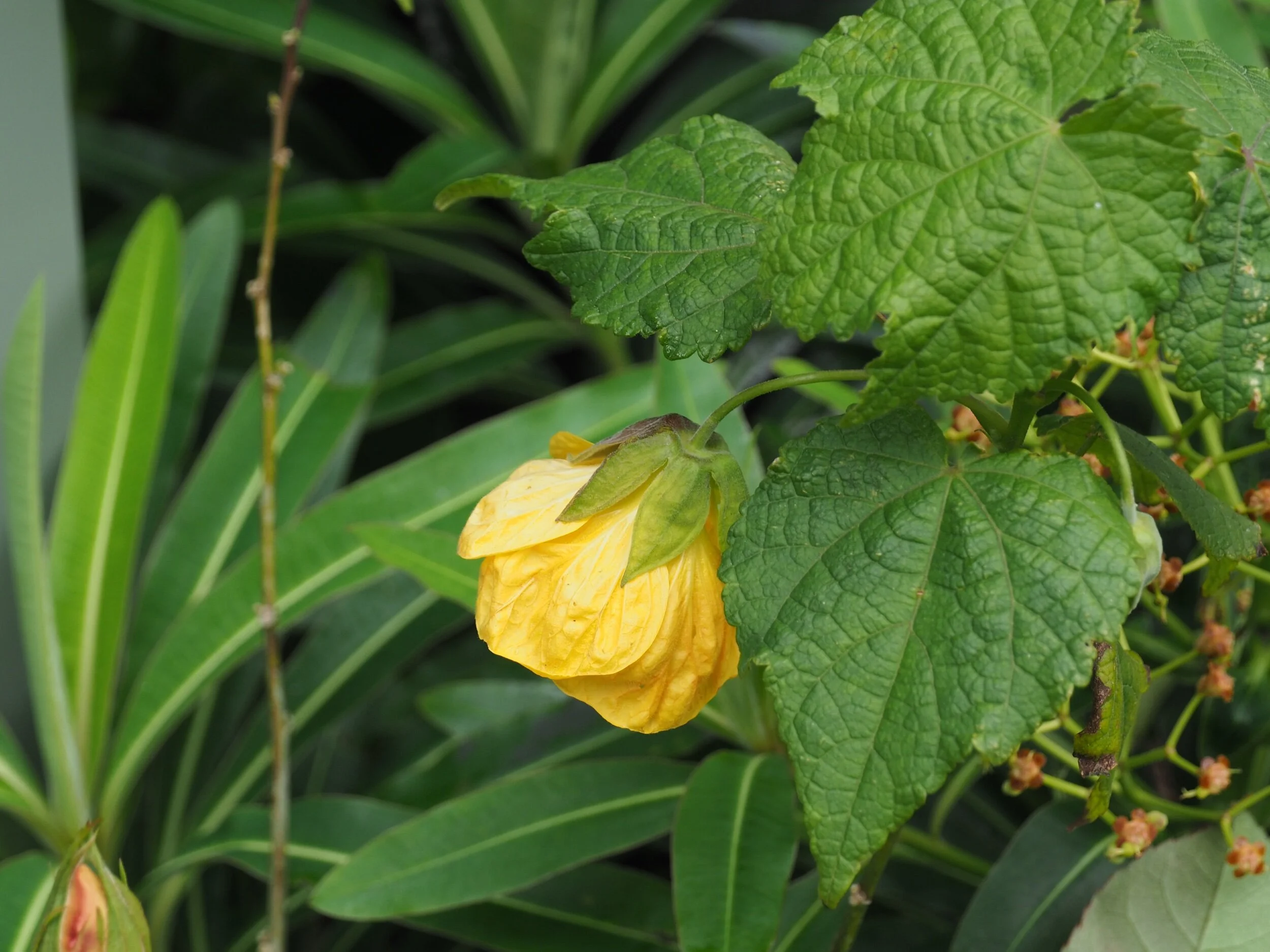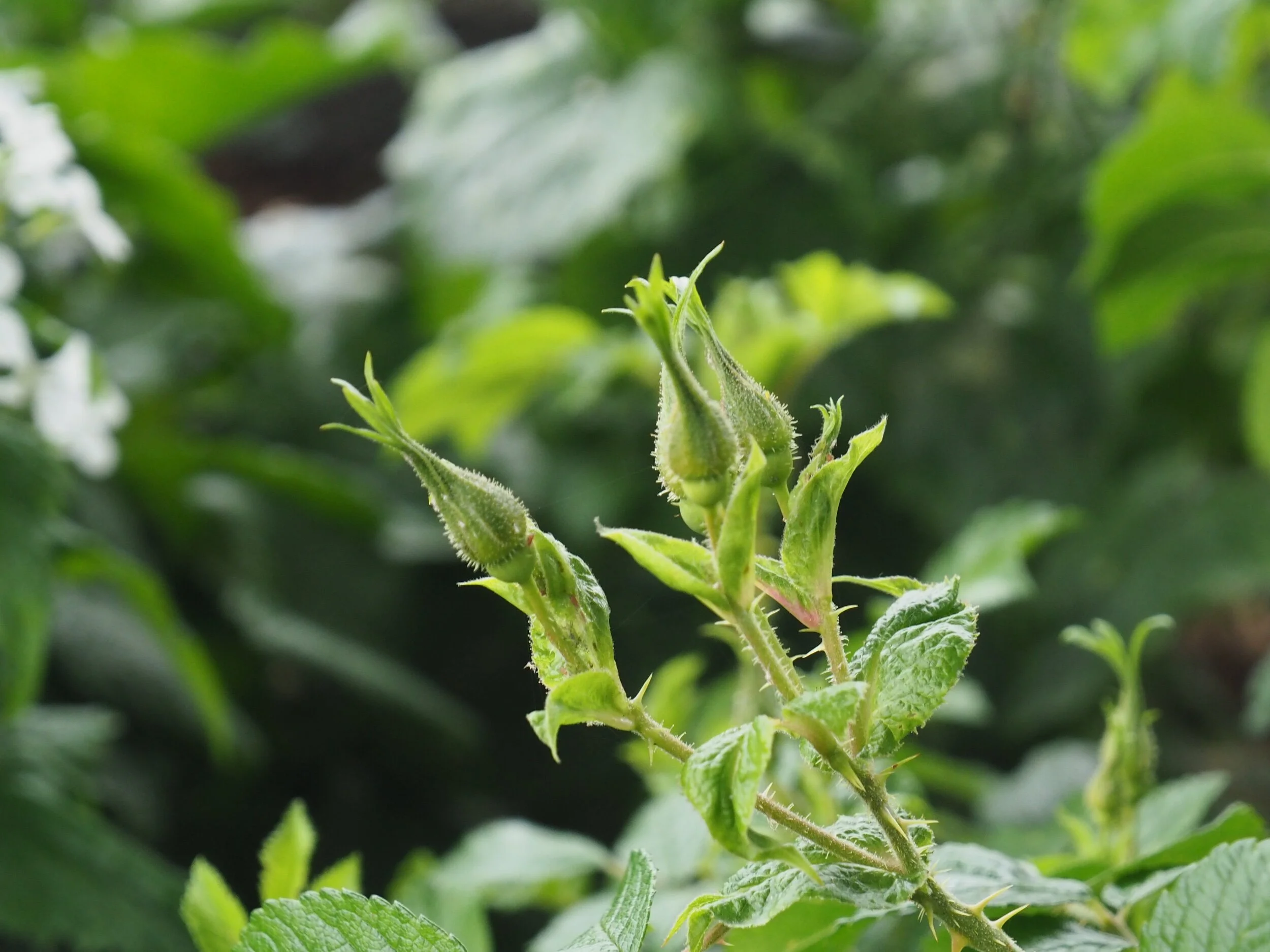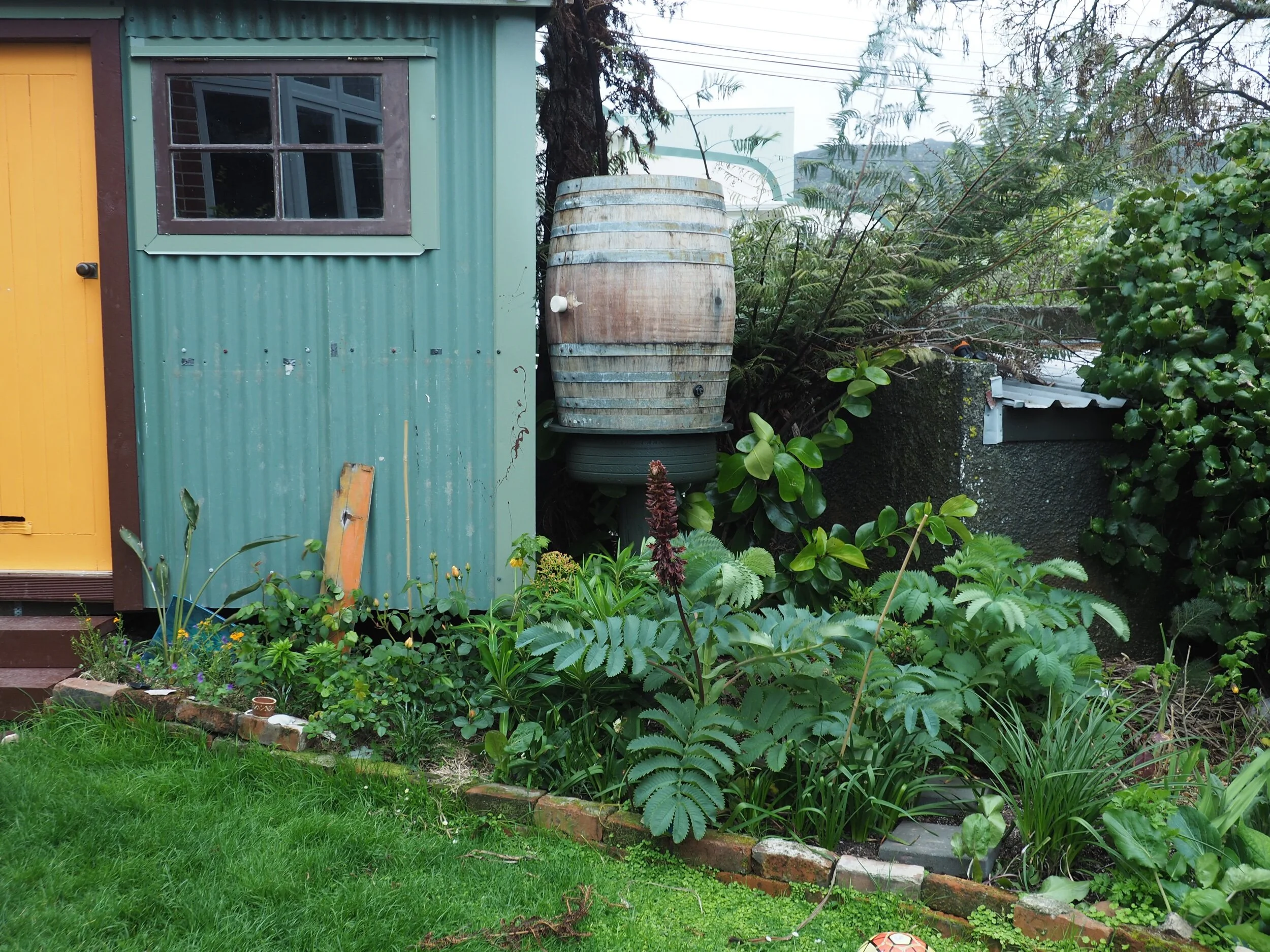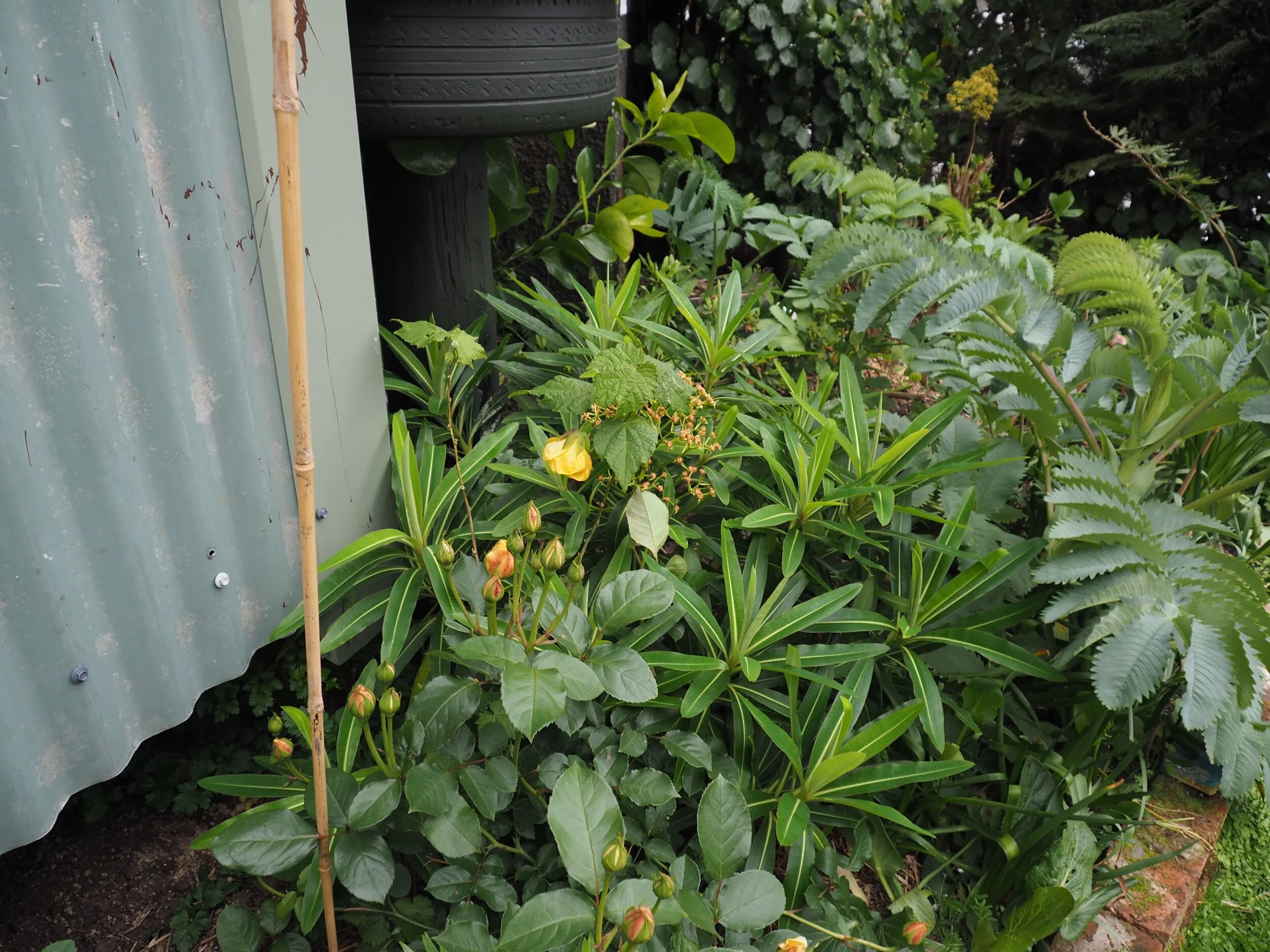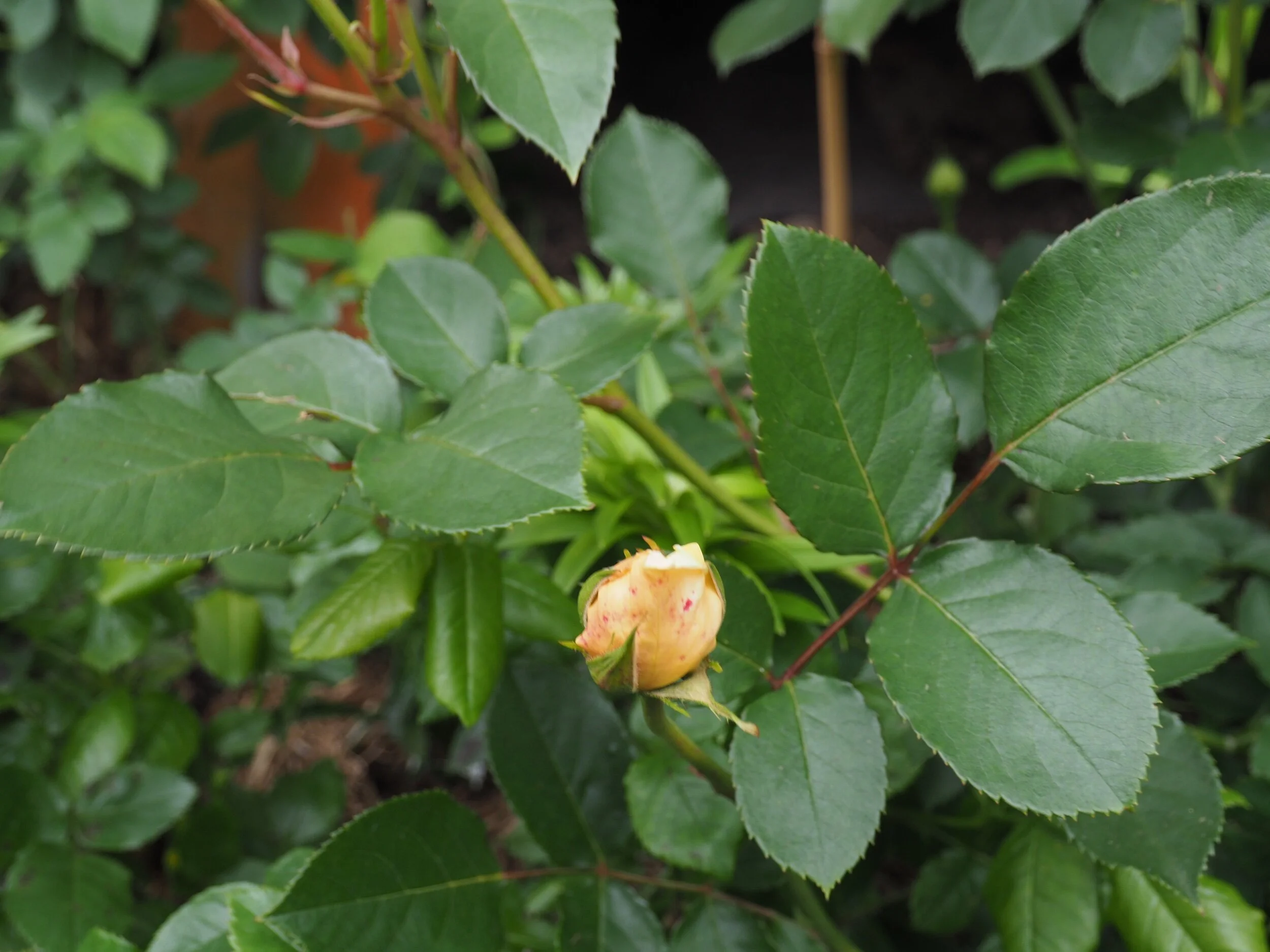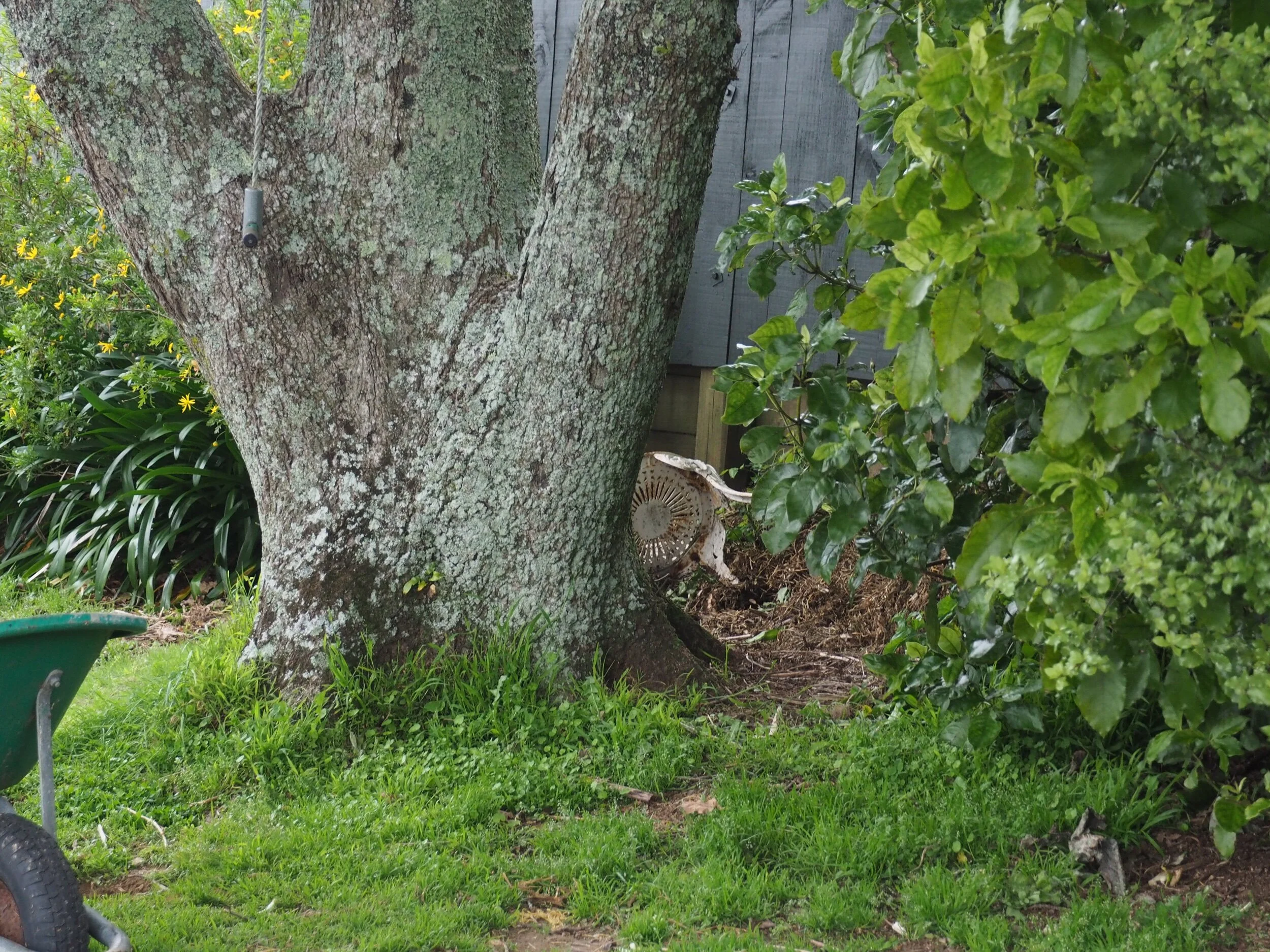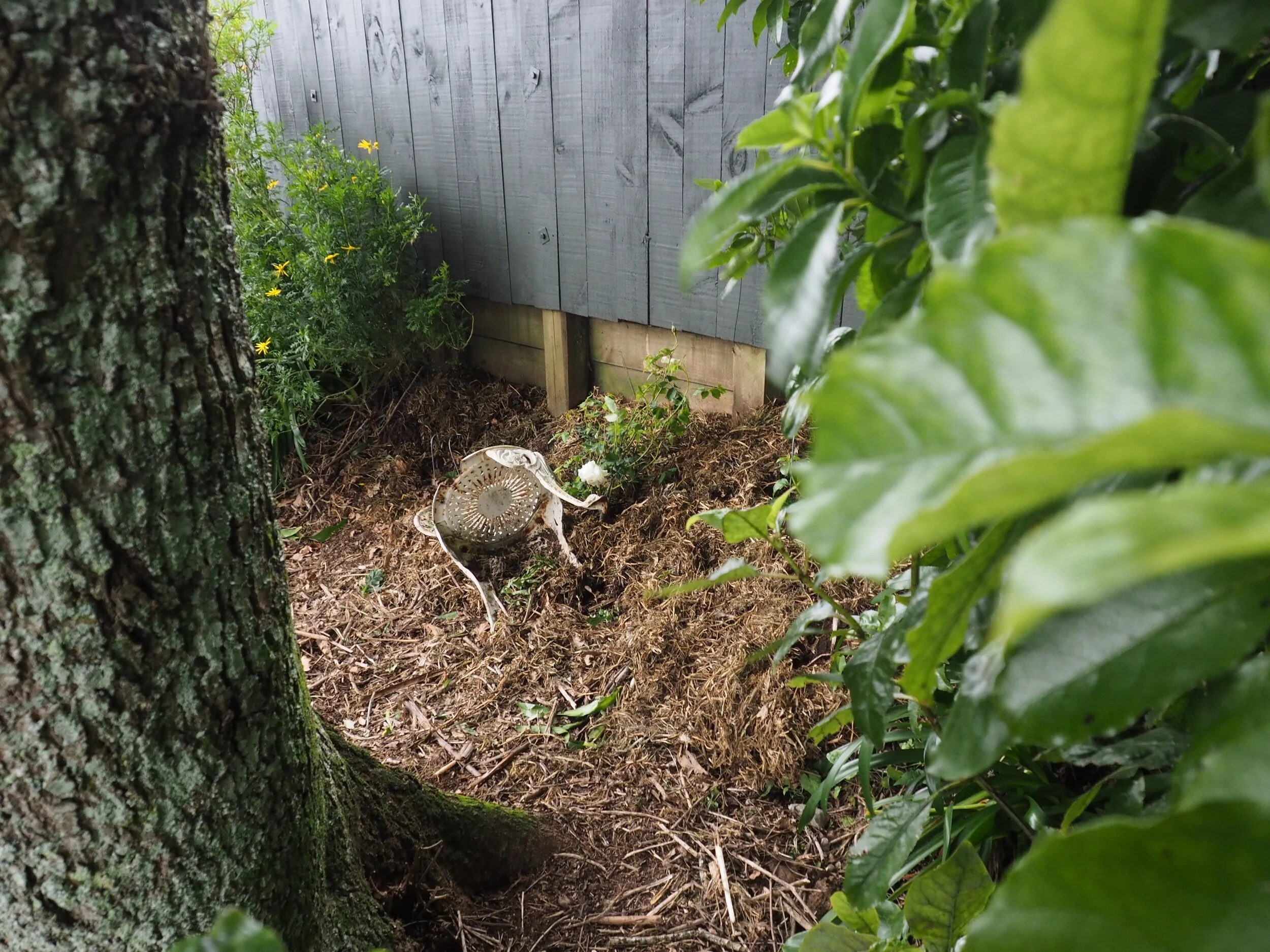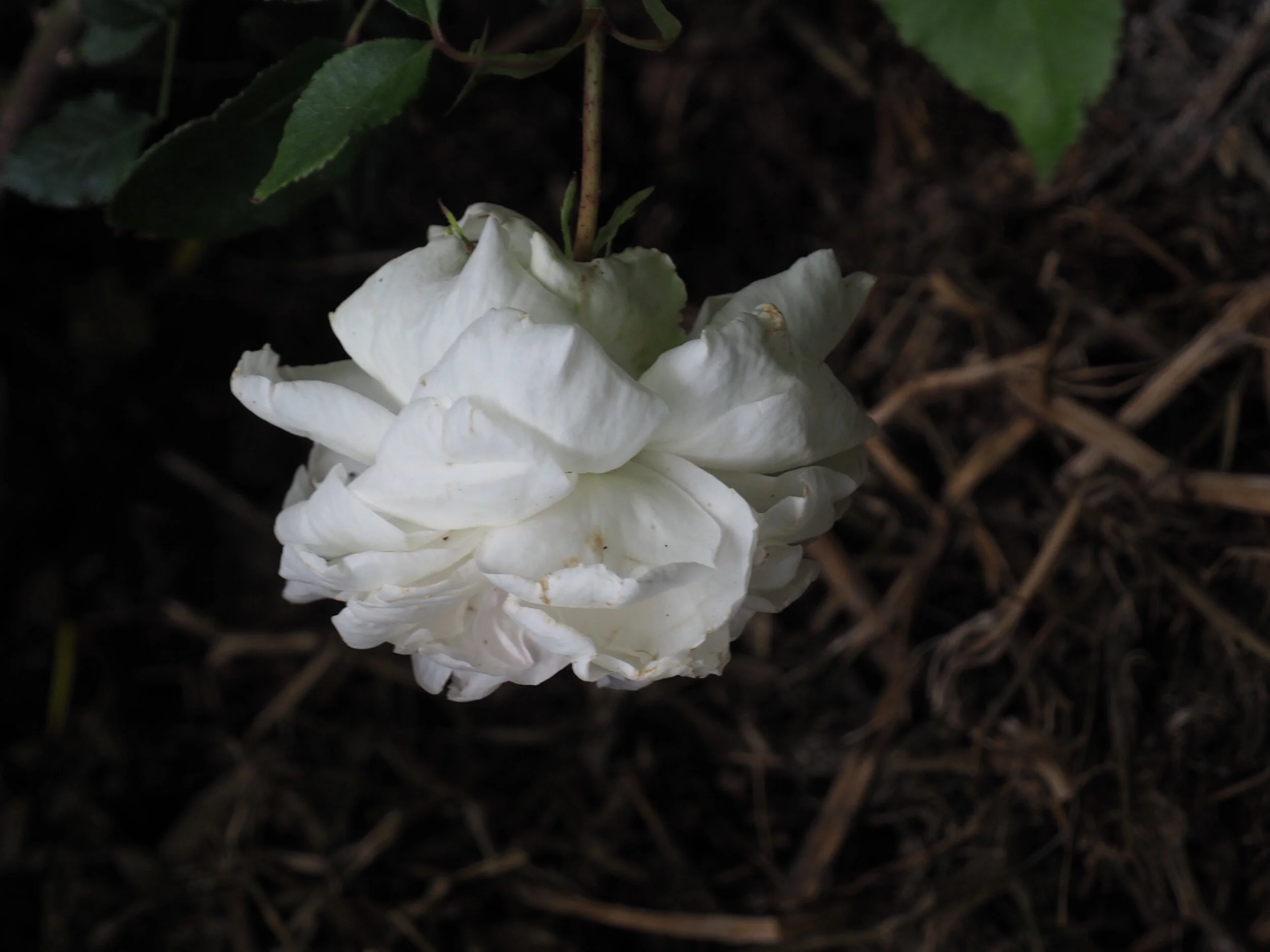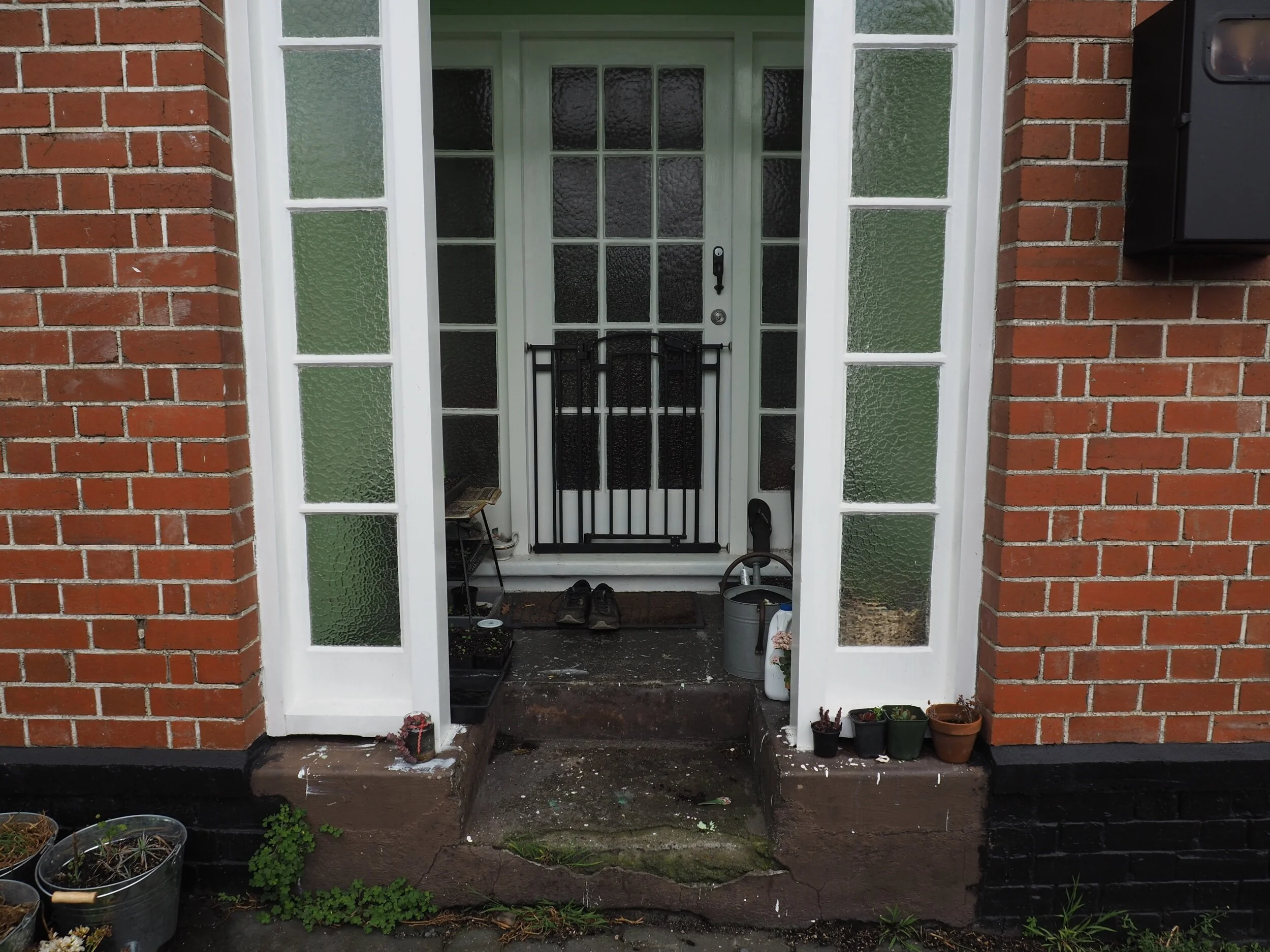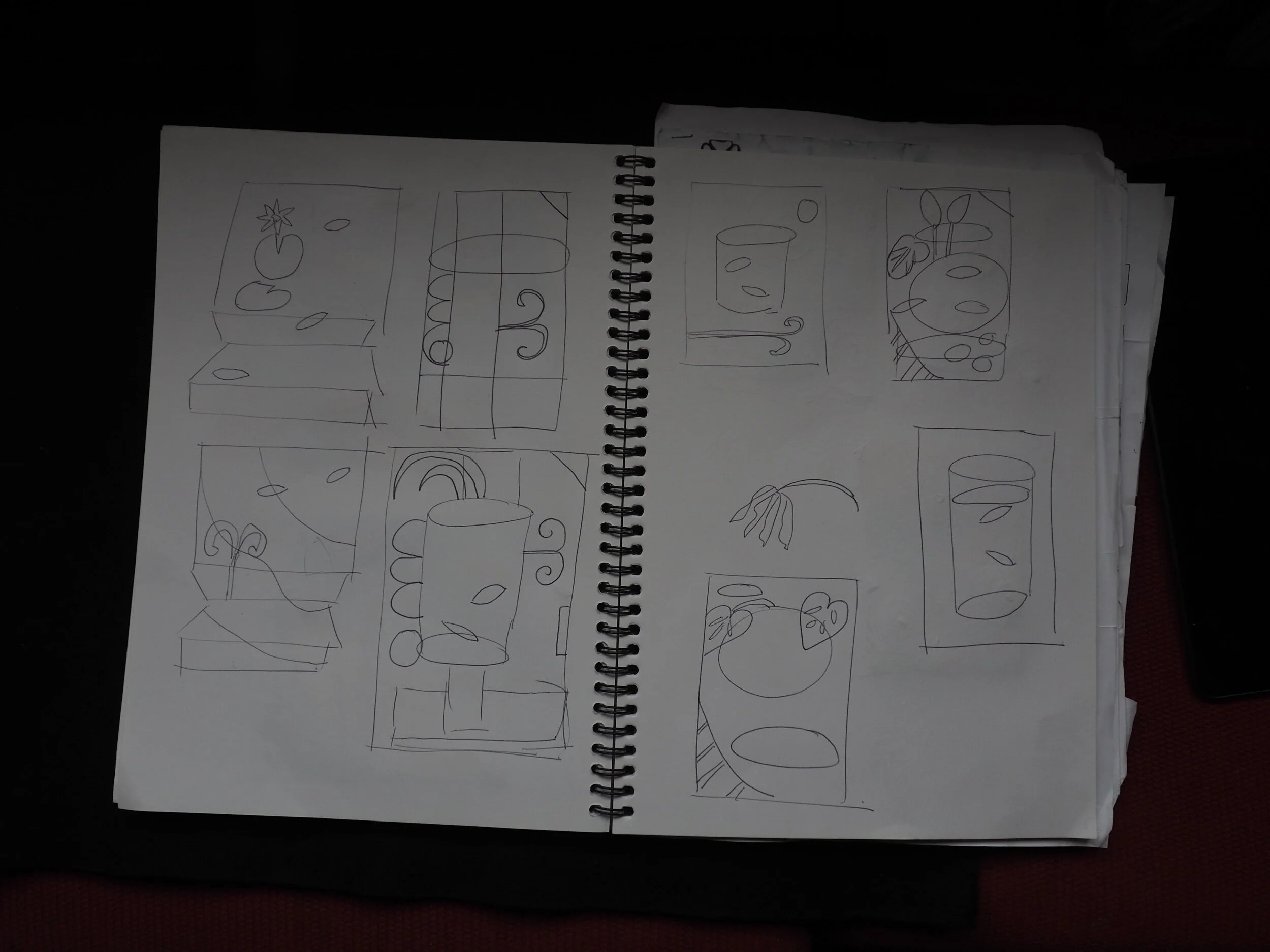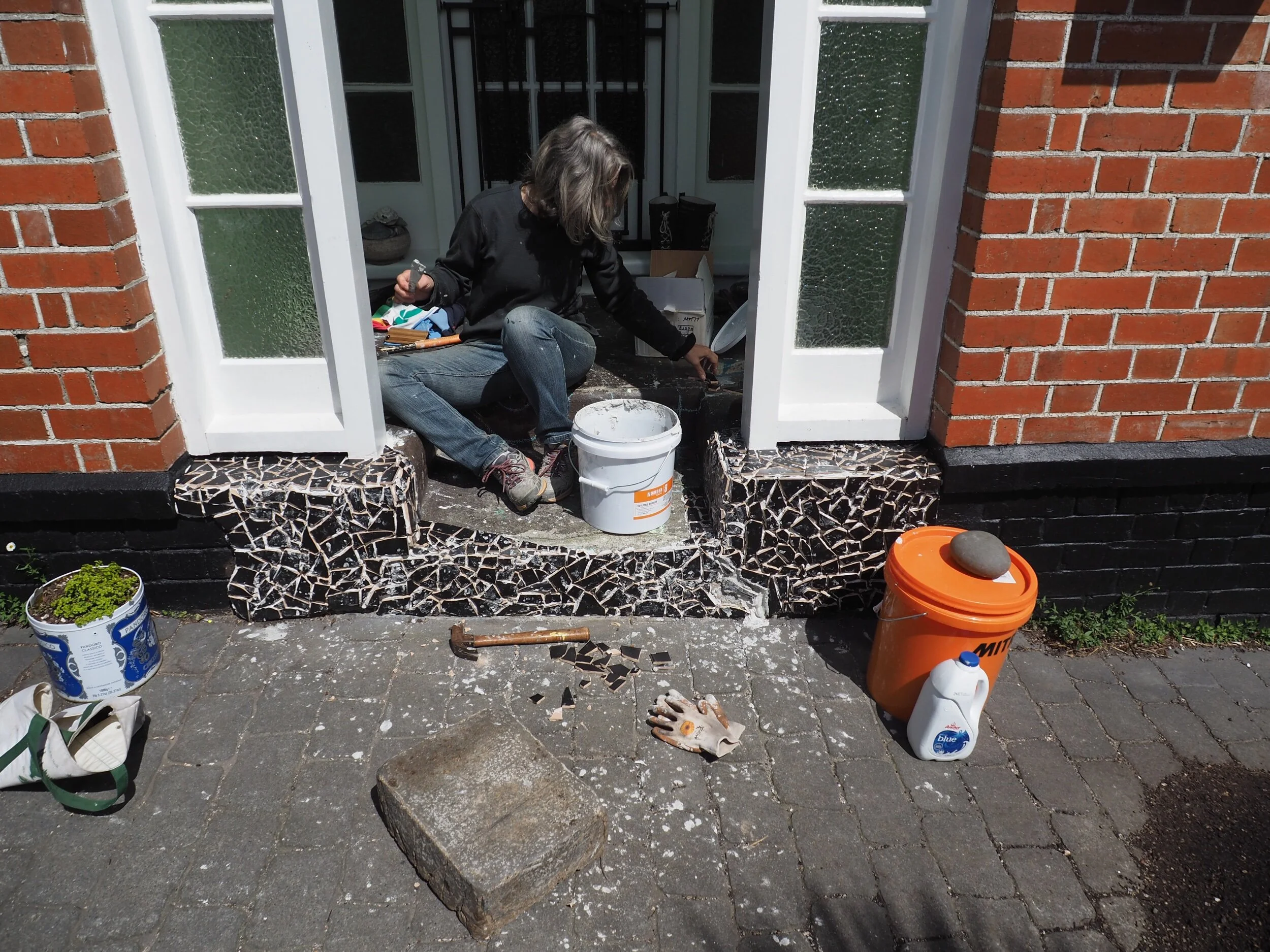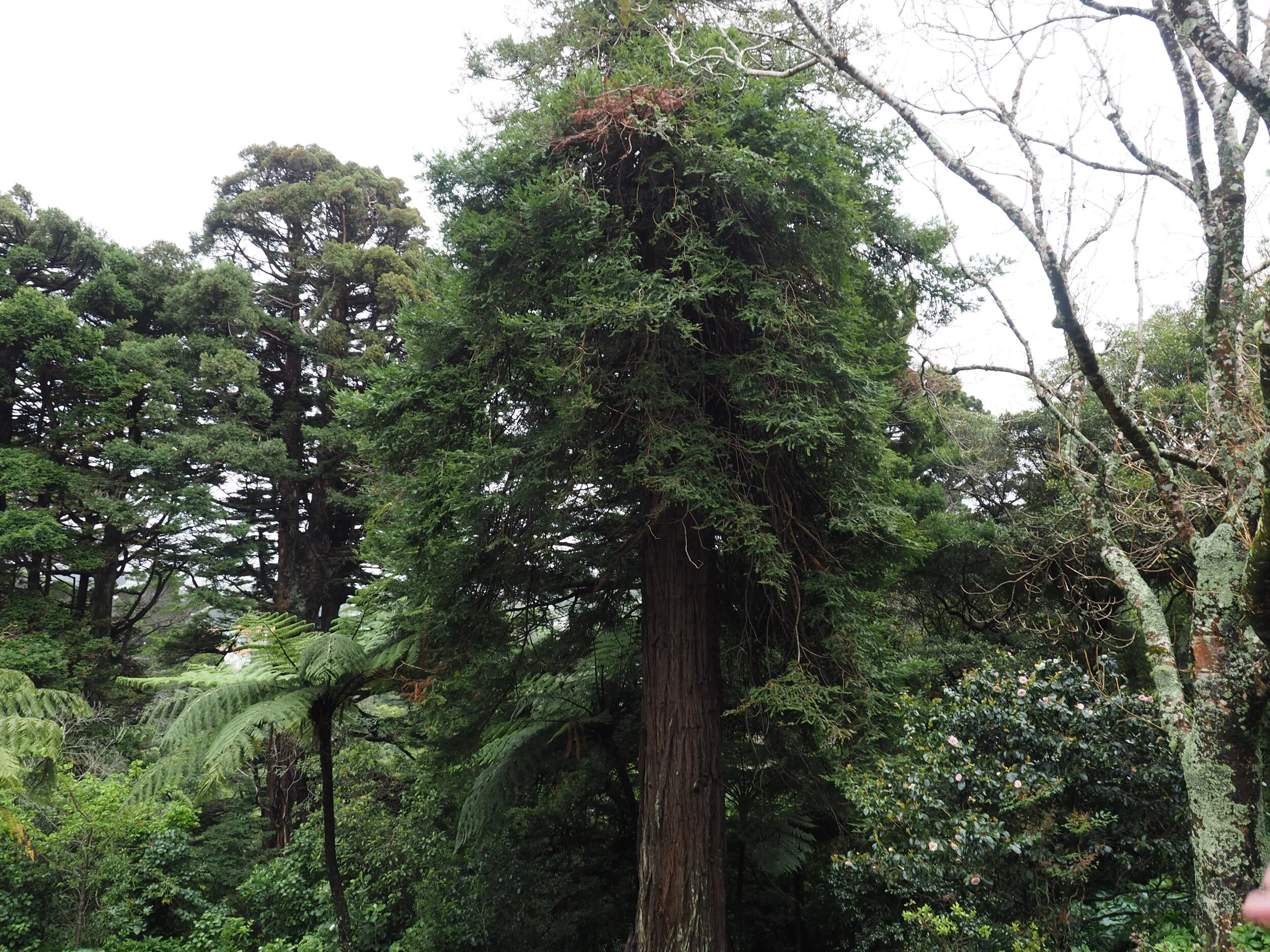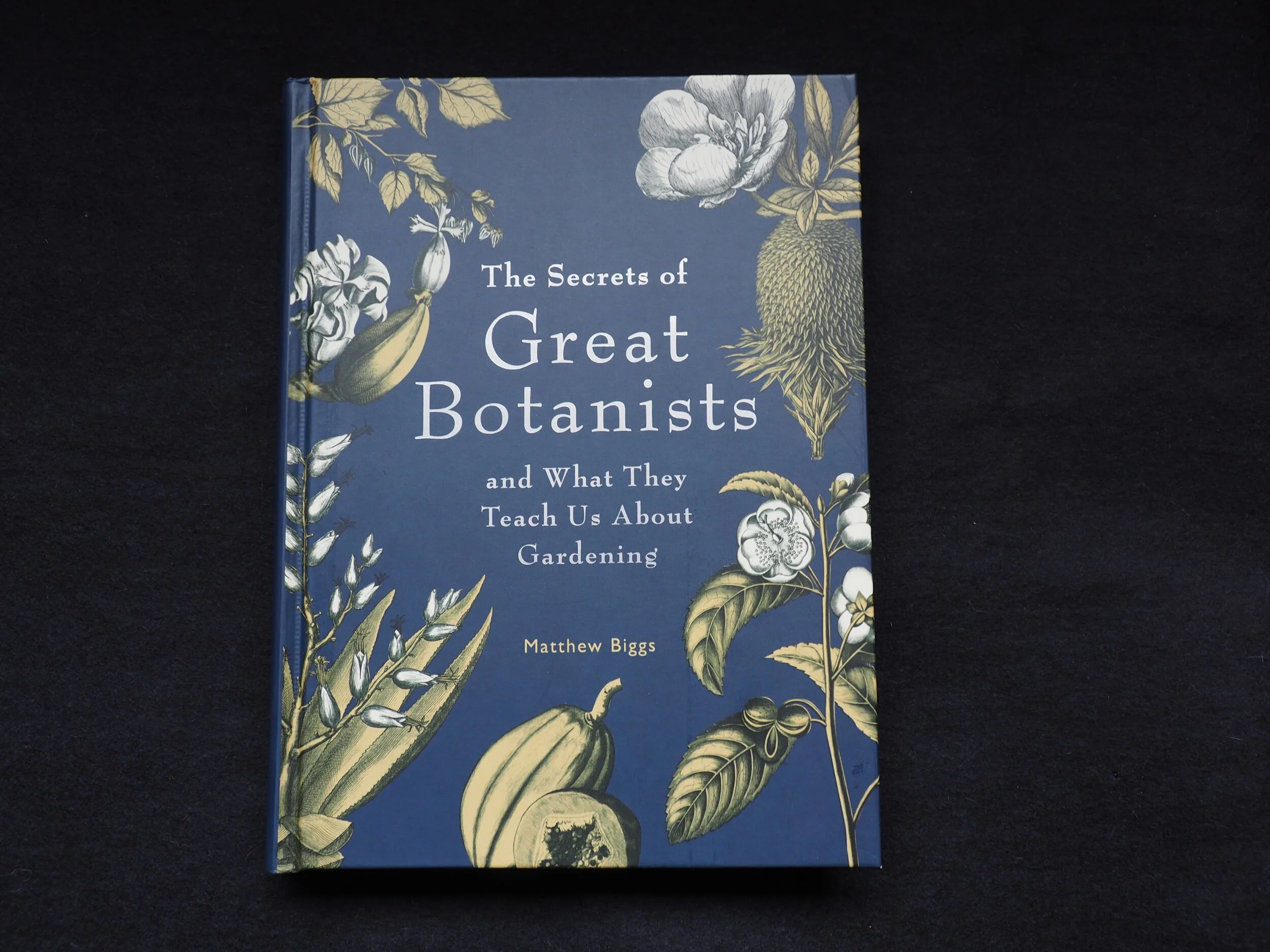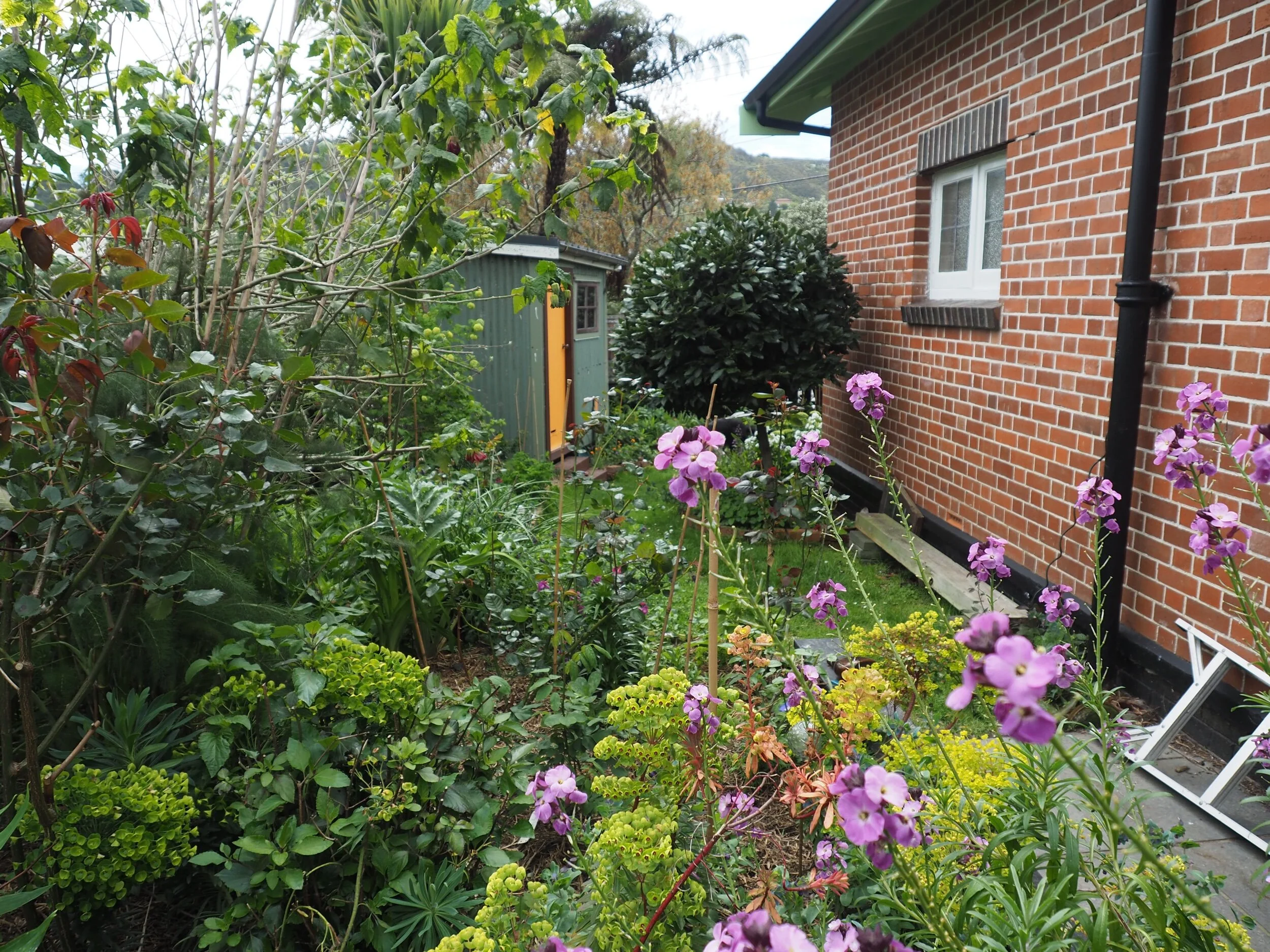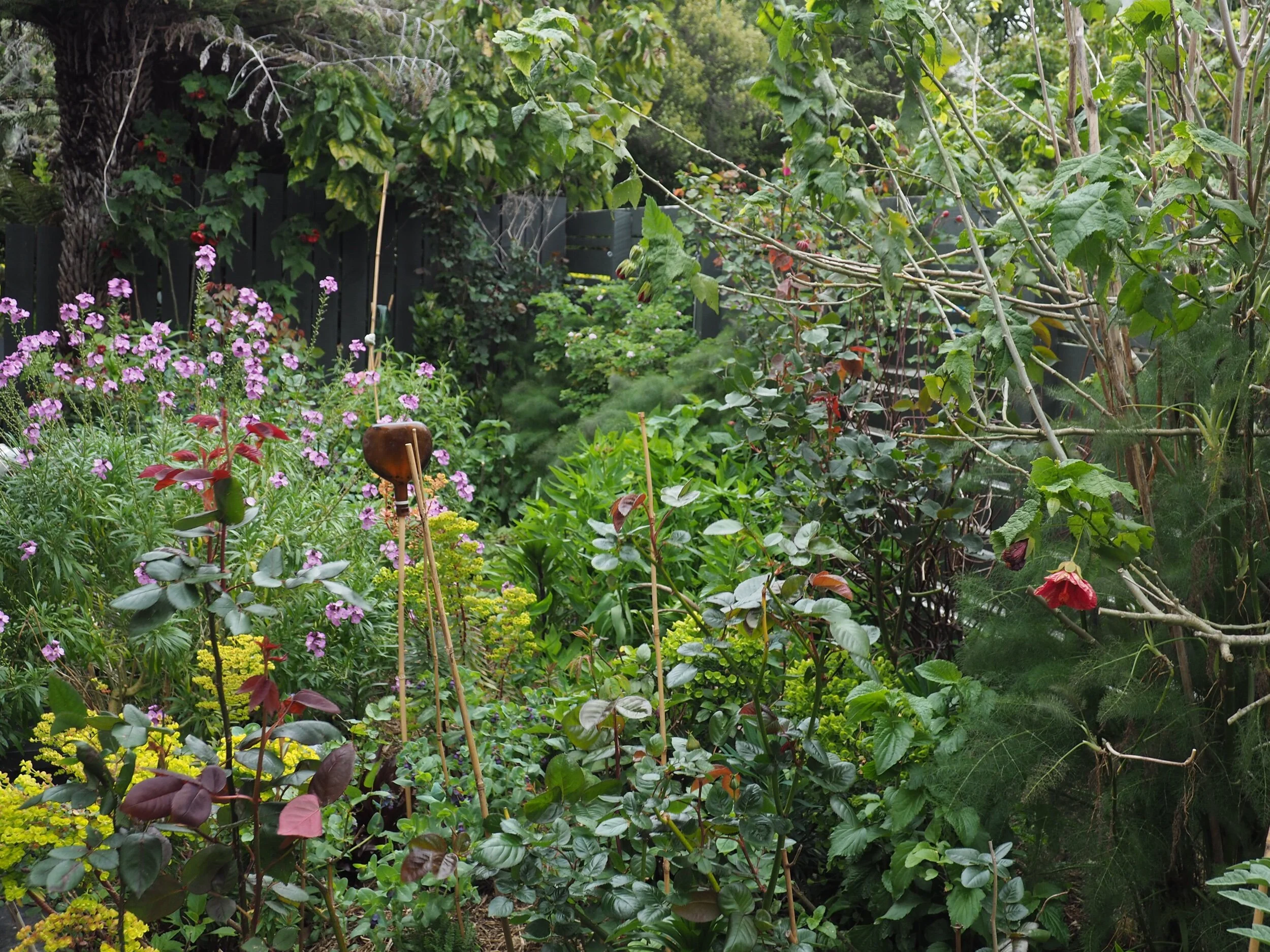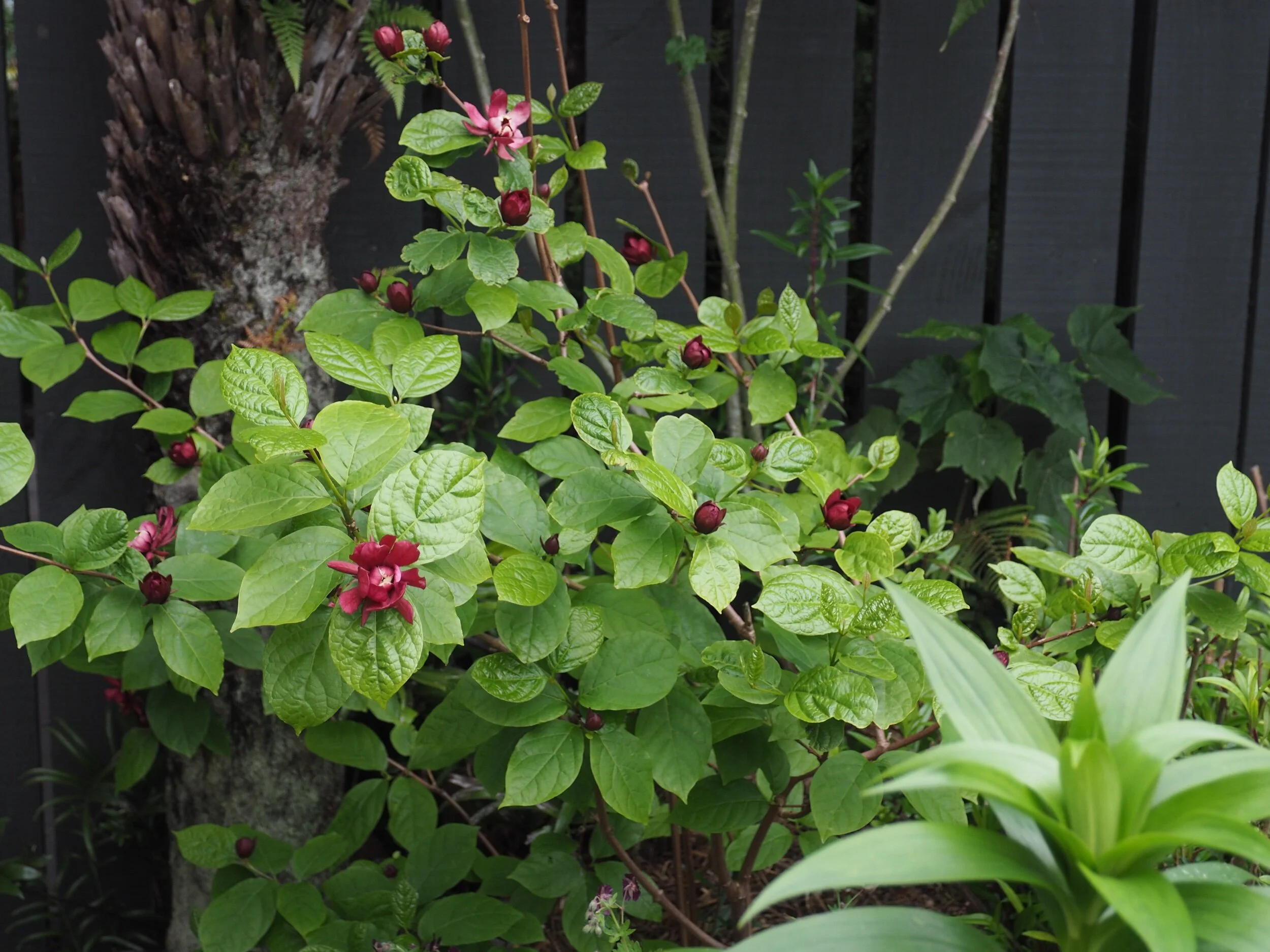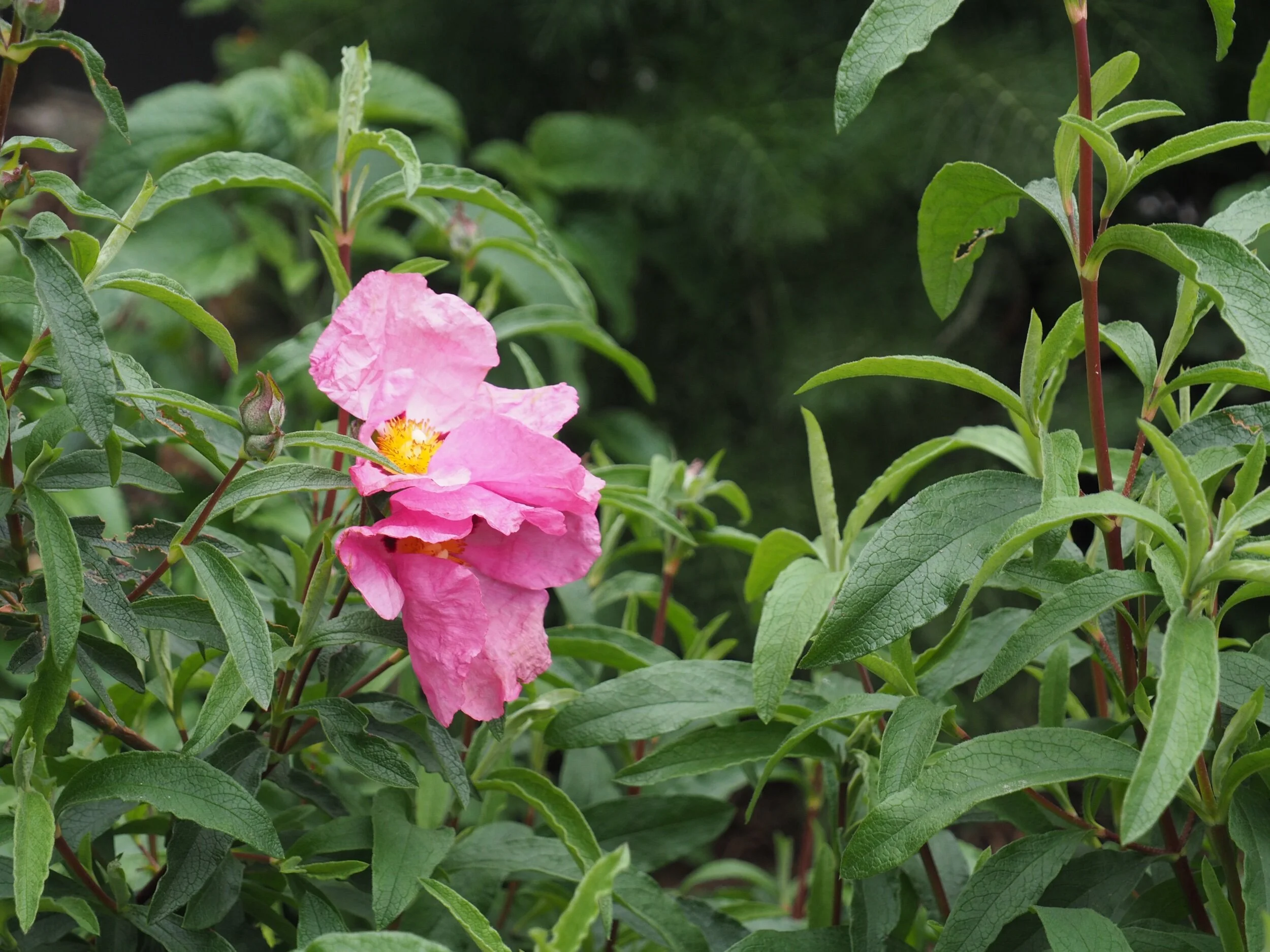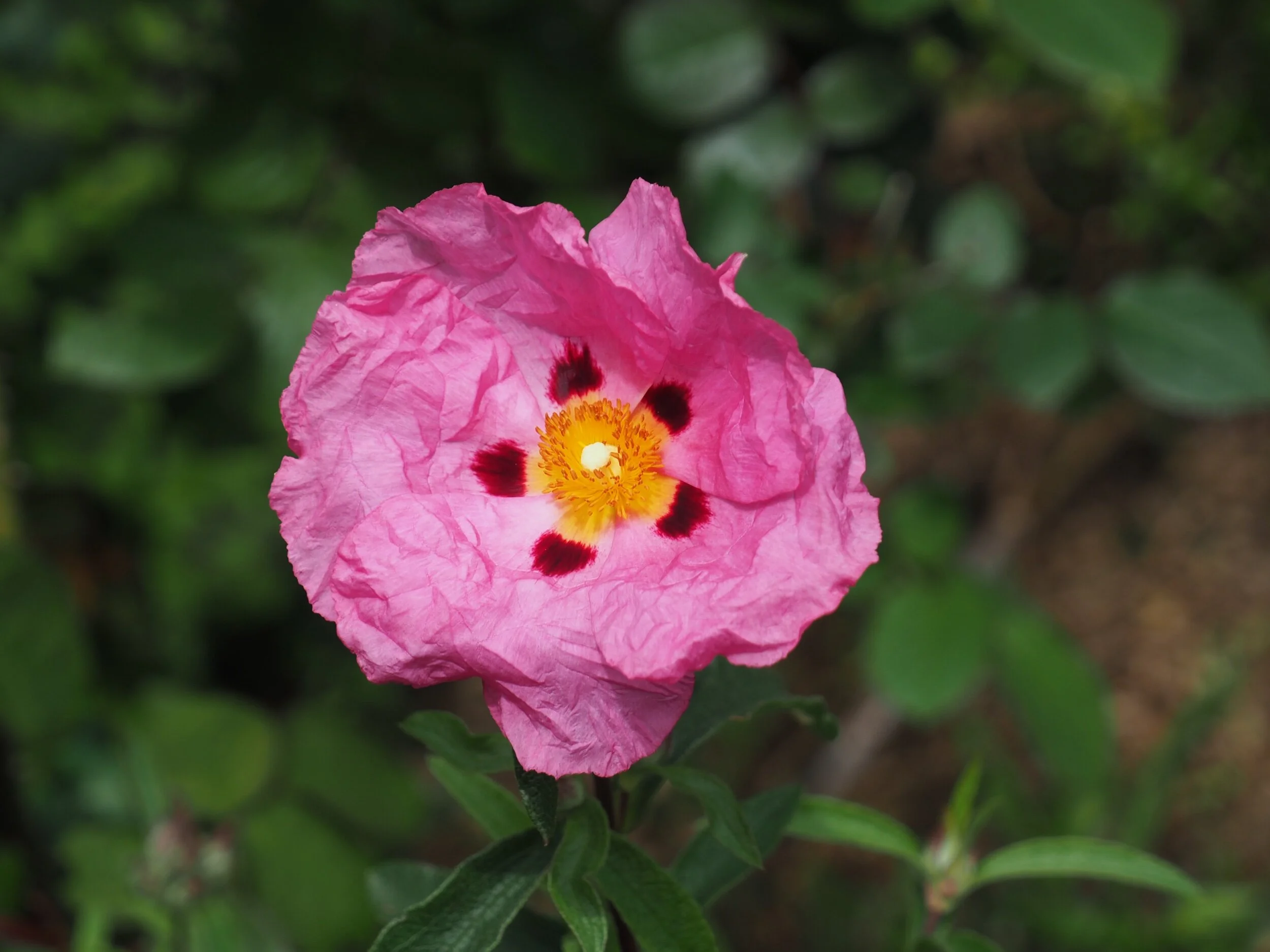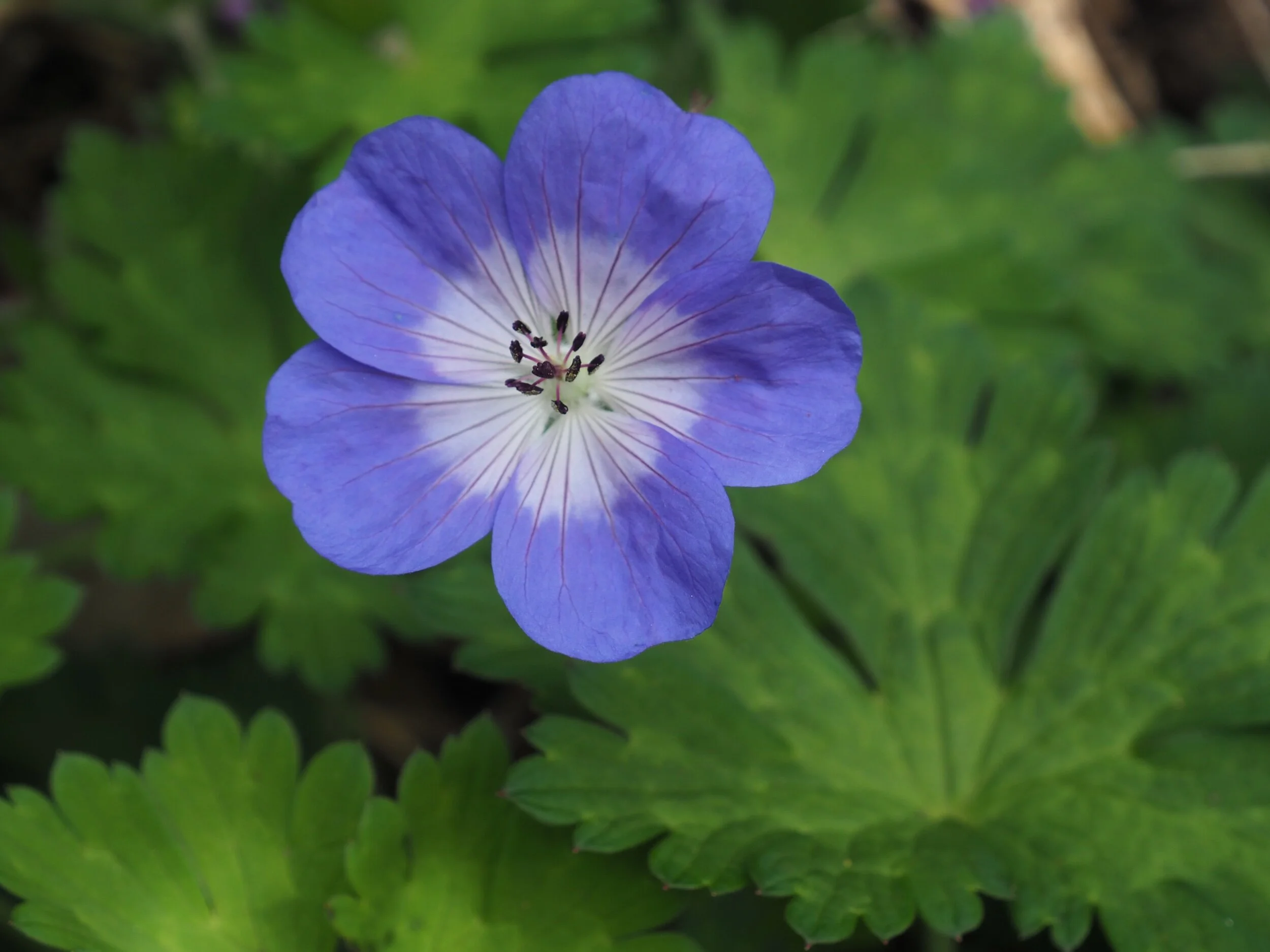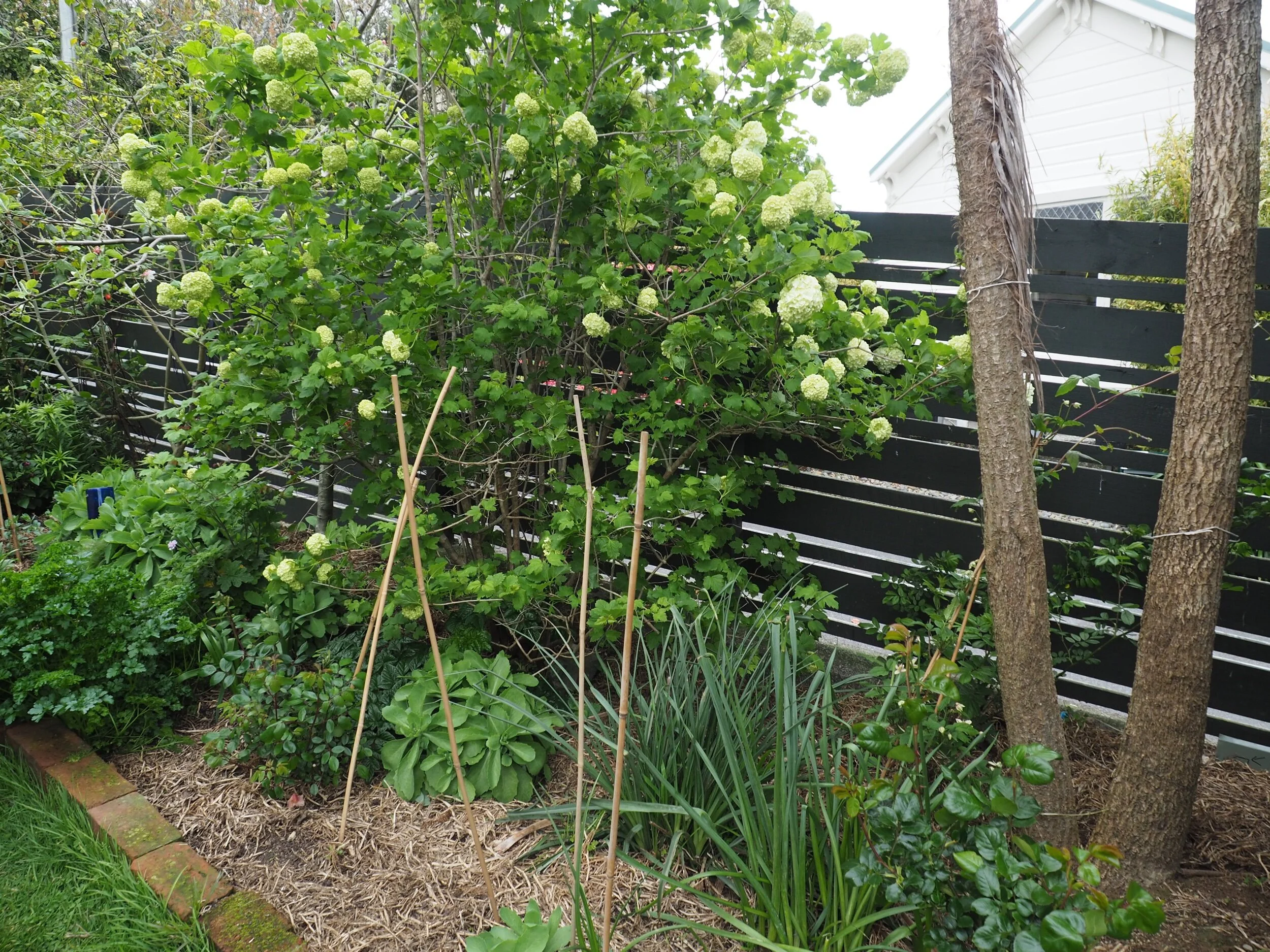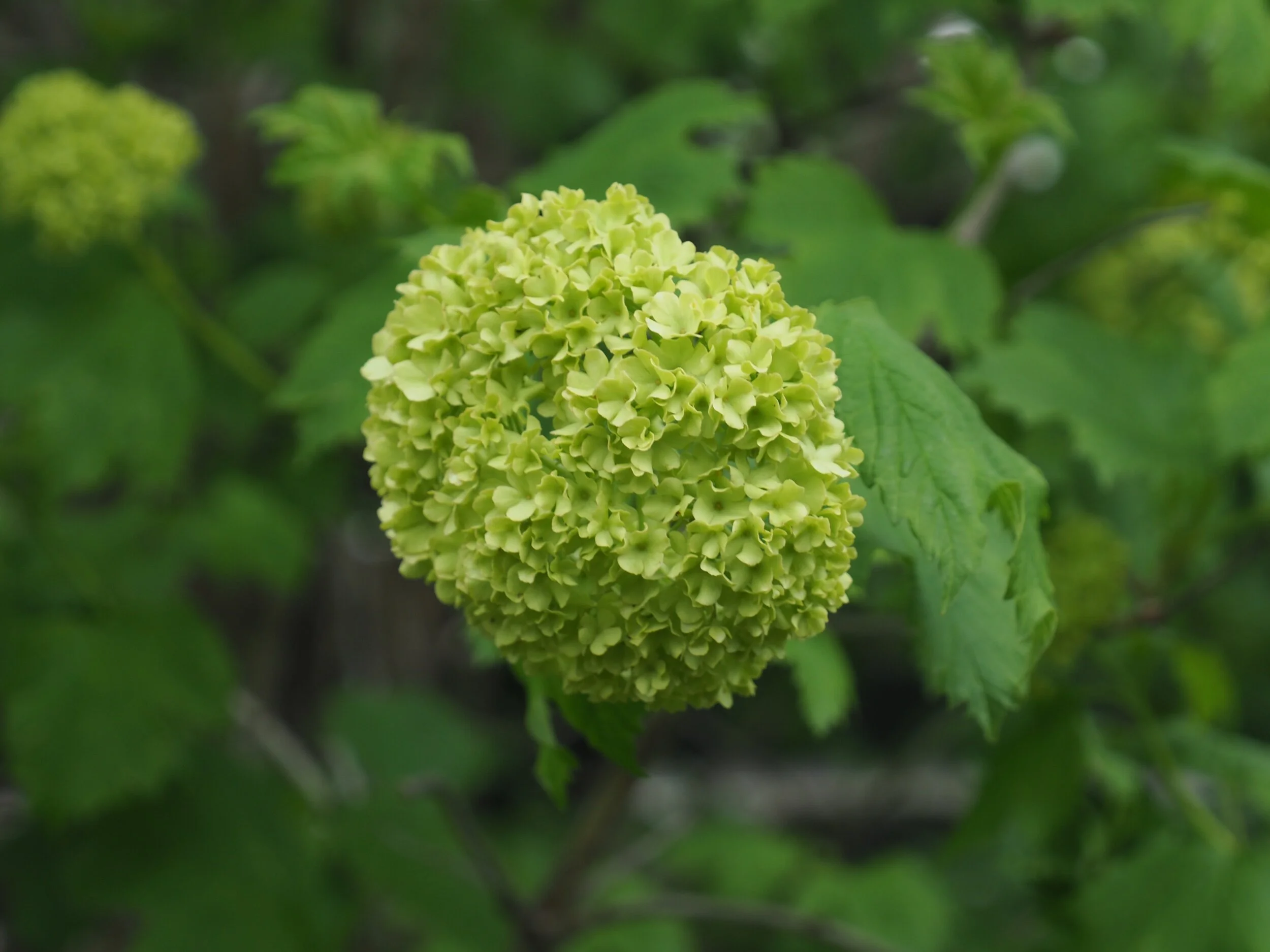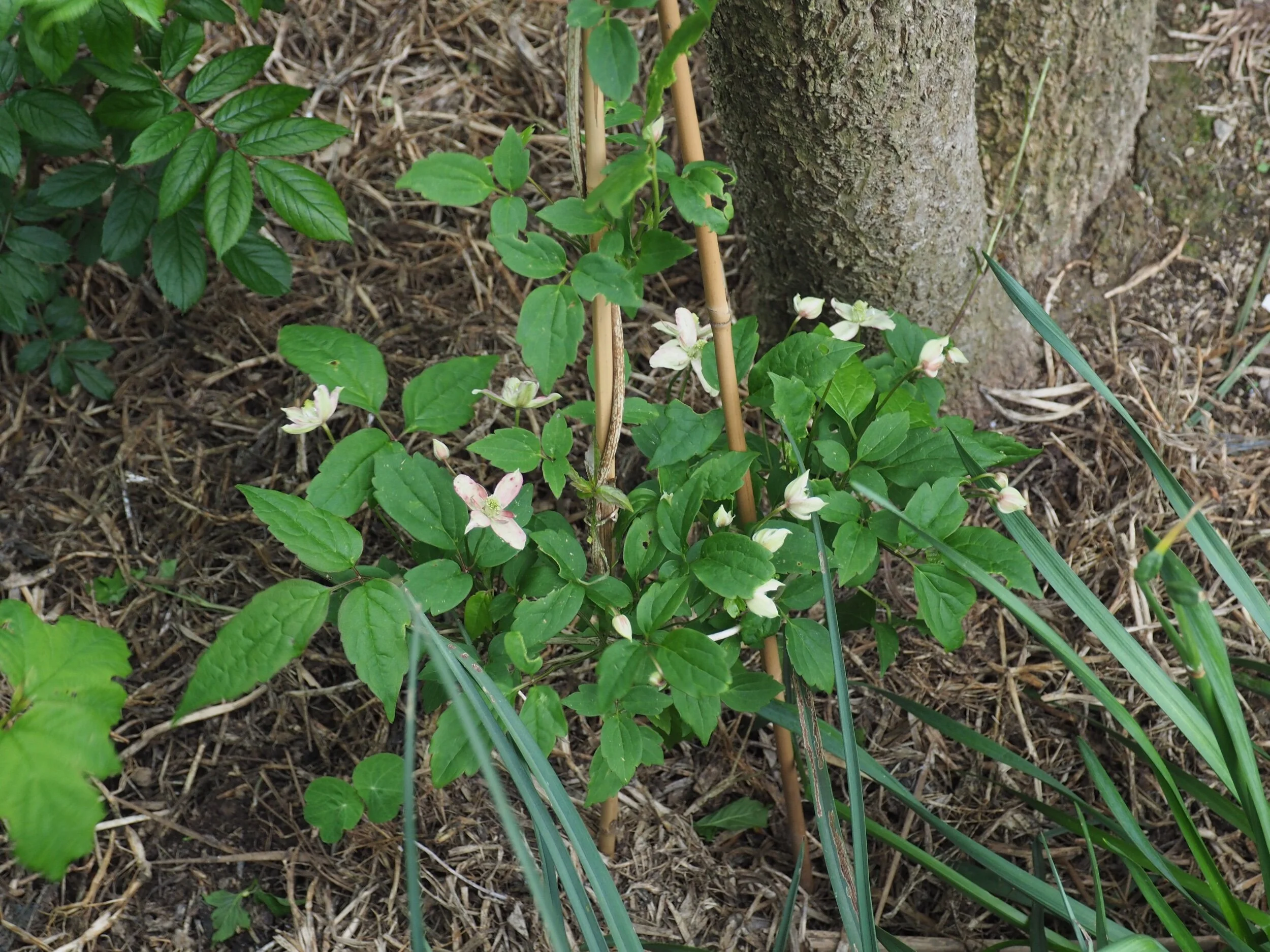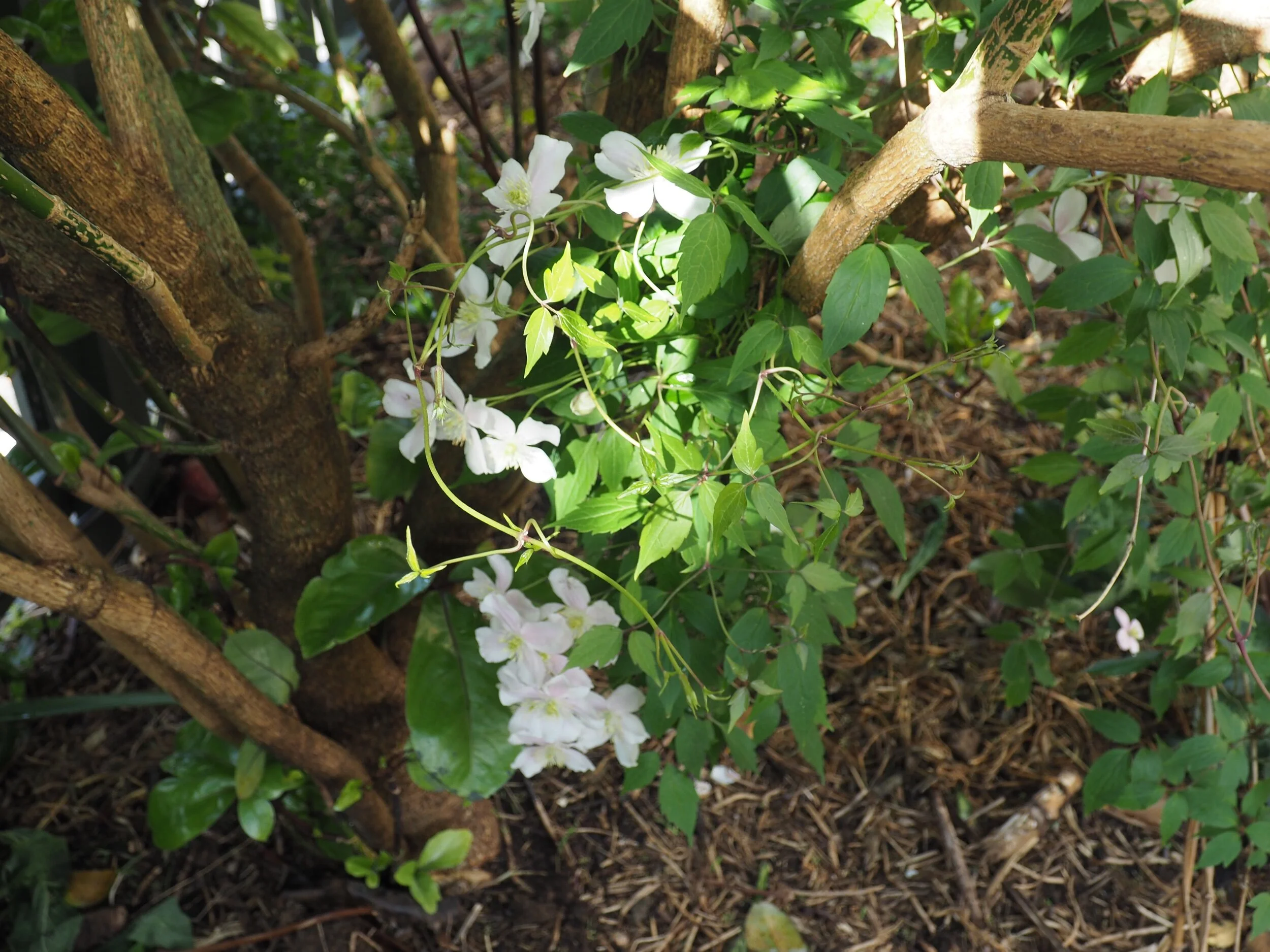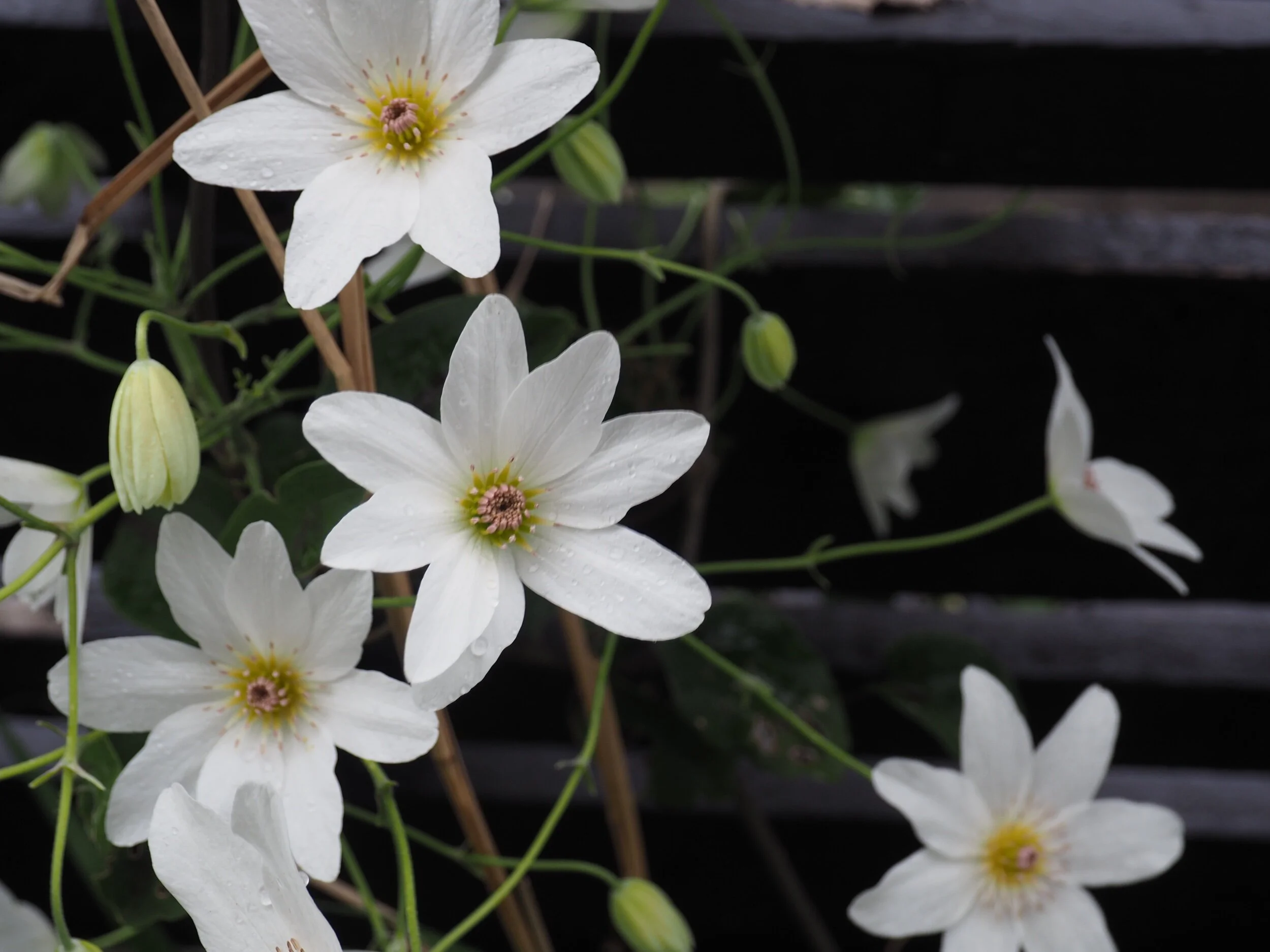It’s the middle of spring and the garden is growing at break-neck speed. The weather is all over the place. One minute it’s hot and still (and I wonder if summer’s coming early), then there’s a cold snap (with a dusting of frost), next there’s torrential rain (which washes off topsoil, leaving new plants beached), and finally come the winds with gale-force gusts (desiccating plants, knocking-off blossoms and snapping stems). Spring is the cruelest month in Wellington. If plants can survive these 3 months then they can survive anything.
This blog is about a new garden I created behind the oak tree and a couple of roses. I’ll tell you a little bit about a short botanical course I went on and a new book I bought about botanists. I want to show you what’s happening in the side garden on the western side of my house and finally I want to show you 3 of my new clematis’s. And, if that isn’t already too many things, I want to show you my front steps and show you how my friend Cheryl and I are transforming them.
Finally the soil’s warm enough. My primulas, which I thought were dead, have poked their leaves above the surface, along with the hostas, ligularias and dahlias. The garden is wonderfully out-of-control and I’m trying to keep up. Every day there’s some small wonder to notice and stare moonily at.
Blossoms on my crab apple tree.
The oak and sycamore trees are covered in leaves and shade has returned to the back of the garden. There are blossoms on the pear, apple and crabapple trees, but nothing on the greengage. The greengage has never flowered for me, but then I’ve moved it twice in its short life in my garden - maybe next year there’ll be blossoms. Like all the dogs and gardeners that I know, I live in a state of perpetual hope. The wisteria, which has lots of leaves, is also flowerless, as it was last year and the year before that. I heard it can take 7 years for wisterias to get round to making flowers - 4 years to go.
One of my yellow abutilons, in the front garden.
The waxeyes love the abutilon flowers and I love the waxeyes, which is why I planted 3 more abulilons. The new ones are yellow and I planted them in the front garden. The older ones, in the side garden, are red, pink and orange.
I often see the big fat tuis balancing on the stems of my Melianthus major flowers, drinking the nectar. The nectar is very sweet. It’s called the giant honey flower and cape honey flower. I’ve read conflicting reports about the nectar of this plant in relation to birds. Terrain.net.nz says that all parts of this plant are highly toxic, possibly even the nectar. Melianthus major is a South African plant, gardeners there write about how much their birds love the nectar. Surely the tuis in my garden wouldn’t drink the nectar if it was poisonous? Is it possible that the nectar is safe for South African birds but not New Zealand ones?
Terrain.net.nz doesn’t actually know if the nectar is poisonous or not, it says it ‘might’ be. As far as they’re concerned the plant is a terrible weed and they don’t want New Zealanders growing it. They call it a ‘smelly species of flowering plant’. They go into incredible detail about how it kills people and animals. I get frustrated with anti-exotic propaganda. There are lots of native plants which are poisonous too, like kōwhai trees, but a plants toxicity, while important to consider, isn’t reason enough to ban it from NZ. And as for classifying a plant as a weed, well, I think we need to stand back and really think about this. It’s unrealistic to expect native plants to reestablish themselves in former landscapes that have been obliterated by humans. These new landscapes are just that, ‘new’, and as such need to be viewed differently….anyway rant over. Lets get back to my little slice of paradise.
Rose buds on my Rugosa rose ‘White Grootendorst’.
My roses, which have been bare thorny sticks for 3 months, are filling out. Some have tight green flower buds, pulled tightly over the petals. Each bud is a wrapped present in miniature. I can’t wait to see them unfurling.
I bought lots and lots and lots of new roses this year, and I have no idea what they’ll look like in bloom. Sure I’ve seen photos of them online and in books, but it’s not the same. A photo of a rose is only a vague approximation. It can’t come close to a real live flower. I check on my roses everyday, noticing new leaves and stems and prickles and buds.
Recently, my son asked me how many roses I had, using a tone of voice that suggested I was mentally impaired. I told him I’d lost count, ‘probably somewhere around 63, give or take a few’, ignoring his patronising tone. I accept that a 15 year old boy, who lives for football and friends and an undemanding life, couldn’t possibly understand why a person would get obsessed with old roses. Roses don’t score goals, or get paid silly amounts of money for kicking a ball or promoting underwear. Roses are boring, they spend a third of the year looking dead.
My son put an arm round my shoulders and patted my arm. He looked down at me with mock concern and said, ‘come on mum, that’s quite enough roses. The garden doesn’t need any more. Repeat after me “I won’t buy any more roses”.’ Within a week of this stupid conversation I’d bought 2 more.
Here are 3 of the plants I’ve talked about, Rosa ‘Graham Thomas’, a yellow abutilon and Melianthus major.
The Austin rose ‘Graham Thomas’.
The Austin rose ‘Graham Thomas’.
I’ve wanted ‘Graham Thomas’ for a very long time, every since I got into old roses. I feel terrible but I forgot to order him when I bought my bare-rooted roses back in winter. Then I saw him at Mitre 10, of all places, hanging out with the Hybrid Teas and Floribundas, looking bewildered, not quite fitting in. I had no choice, he needed rescuing and moving to a place where he could be among friends. Now, he has pride of place in front of the new potting shed. His closest neighbours are 2 other Austin roses, ‘Happy Child’ and ‘Windrush’. He’s in spitting distance of ‘Rambling Rector’, ‘Casino’ and ‘Apple Blossom’.
Last weekend I was watching an episode of Gardeners World 2017. Monty was planting up a dark area of his garden that had a north facing wall (south facing to us southerners). He planted a rose, Madame Alfred Carrière and two climbing hydrangeas, Hydrangea anomola subsp. petiolaris. It looked very pretty. I’m always on the look out for beautiful exotic plants for shady places.
As things turned out, I had just the place for the rose and hydrangeas, behind my oak tree. It’s an area that I’ve been meaning to sort out of for ages. It was an area I used as a dumping ground for turf I’d dug up, garden prunings and autumn leaves. With the garden trail looming I wanted to make more of a feature of this area. After all the oak tree is one of my top ten favourite trees. I wanted to show it off.
I moved the pile of prunings and dug up 3 agapanthus growing through them. Then, I painted the fence behind, because it was ugly and I had spare paint and Mme Alfred Carrière deserves better than a rough tantalised wooden fence. After that I covered the area in leaf mould, which I’ve made over the last few years and was conveniently close by. At last it was time to plant the 2 hydrangeas and the rose. I’ve ordered a white anemone and a white pulmonaria for the same area because it’s looking a bit bare.
The new garden behind the oak tree.
My nana’s broken patio chair protects Mme Alfred Carrière from marauding dogs.
Mme Alfred Carrière.
There’s no denying that my front steps are ugly. The concrete is cracked and broken in places and weeds are growing through the bottom step. My friend Cheryl, who’s an artist, convinced me that I ought to mosaic them. She’s done heaps of mosaicking and reckons it’s easy. To date, I’ve only ever covered a very small terracotta pot with broken crockery and grout. Mosaicing my front porch seems very daunting. Cheryl says she’ll help me.
The front steps and porch.
I turned to modern painting for design inspiration, which is always my go-to place. Initially, I looked at Matisse’s goldfish paintings and made some sketches. I was looking for an aquarium feel because of the green walls and glass windows. Then, while looking though one of my mum’s art books, I stumbled across ‘Electric Prisms’ by Sonia Delaunay, which she painted in 1914. As soon as I saw the reproduction I knew I’d found what I was looking for. The reproduction was old and faded but it didn’t matter because it instantly took me back to Paris.
My family and I were visiting Paris in winter a number of years ago. We spent a day walking around in the rain. Eventually we took refuge in an art gallery, which was warm and dry and free. Sonia Delaunay’s painting was hanging in a room with a view of the Eiffel Tower and the River Seine. Outside the world was grey and wet and sombre. Her painting, by contrast, was full of colour which moved and spun and collided, wheels turning, lights flashing. It made me think of jazz and machines and movies playing at triple speed in dark theatres.
Designs based on Matisse’s goldfish paintings.
Designs based on ‘Electric Prisms’, 1914, by Sonia Delaunay.
This is how the steps looked two days ago, after Cheryl and I did some more work on them.
Cheryl mosaicking.
It’s very hard to find coloured tiles which aren’t glossy. All the glossy coloured tiles are for interior walls. Floor tiles only come in black, brown, grey and white, which is very boring. I could’ve bought some stunning Italian pool tiles but I would’ve had to wait for 4 months for them to be shipped here. I ended up buying glossy tiles (with only the black and yellow ones in matt) and hope like hell no one breaks their neck getting to our front door. The coloured tiles arrive in a week.
Today Cheryl and I grouted most of the black tiles. I’ve learnt many things about sticking down tiles, but the most important thing is not to leave big gaps between them. I did, and I had to go back and put little tiles between the big ones. Cheryl tells me that each mosaic should only be a few mm apart from its neighbour.
Grouting mosaics is a very specialised craft. I’ll write about that in the next blog. All I’ll say is that it was a lot harder than Cheryl made it look.
The front steps this afternoon.
A magnolia at the Wellington Botanic Garden.
One of the redwoods, Sequoia sempervirens, that has been attacked by kaka birds - the top of the tree is dying.
For 3 weeks in October I did a short paper through the Continuing Education department at Victoria University. I did it with my friend Sophie. She’s the one who got me onto it in the first place. The paper was called ‘Botanical Insights’ and covered a variety of topics from lycopods (which used to be called fern allies) to allelopathy (the process of chemical inhibition of one species by another). When it comes to plants I’m a geek. I want to find out as much as I can.
Last Saturday we had a field trip to the Wellington Botanic Garden. Here’s a list of random facts that I learnt.
Kōwhai trees belong to the same family as clover and gorse and their seeds are very poisonous, as is most of the plant. They have nitrogen-fixing root nodules.
The wooden bits on bagpipes are made from the holly tree.
Almost every part of the yew tree is poisonous. They’re very important in cancer drugs.
Magnolias belong to one of the oldest groups of trees. They belong to the family Magnoliaceae and date back 105 million years.
Ash trees have fallen out of fashion. Their wood is used to make walking sticks and cricket bats.
The giant sequoias are named after a man called Sequoia who was an important leader and thinker in America. The kaka (large NZ parrots) are slowly killing these giant trees by stripping the bark off them.
The silver fern is the only fern in New Zealand that has a white underside. The white colour comes from a water conserving wax.
I ordered a book online called ‘Botany for Gardeners’. It hasn’t arrived yet. It takes a long time for a book to sail from the UK to NZ, and then it has to be processed by the NZ Postal Service. A stupidly slow and inconvenient service. It’s slow because NZ Post has removed most of its postboxes and only delivers mail a few times a week. Here’s an example of how bad things have got. In the local elections, voters could hand deliver their voting papers to a few different places or they could post them for free. Most voters posted their votes. A large number of votes didn’t count because they didn’t arrive in time. The new mayor bet the old mayor by around 62 votes and now there’s going to be a publicly funded recount.
To satisfy my craving for all things botanical I bought this book last week from Marsden Books, which has an excellent gardening section.
I’m not far through it (I’m picking at it rather than reading it from beginning to end) and already I’ve learnt some interesting facts.
An English missionary and botanist called William Colenso moved to NZ in the early 1830s. He explored parts of the country botanising as he went. One of the plants he found, I have in my garden, Astelia nervosa.
Jeanne Baret (1740-1807) was a French botanist and plant collector. She disguised herself as a cabin boy so that she could travel on expeditions with her lover, naturalist and botanist, Philibert Commerçon.
The name William Stearn is included in this collection of botanists. I bought a nondescript looking book by William T. Stearn at a local book fair earlier in the year. It turns out I have a little gem. William Stearn was a brilliant man, who was almost entirely self-taught. In 1992 he wrote the book I now own - ‘Dictionary of Plant Names for Gardeners’. ‘Petioralis’, as in Hydrangea anomola subsp. petiolaris, means, according to Mr Stearn, ‘furnished with a leaf-stalk or a particularly long one’. Coprosma foetidissima, is a common plant in NZ and was pointed out on my botanical field trip last Saturday. According to Mr Stearn, Coprosma means ‘smells like dung’, foeidissima means ‘very bad smelling’.
Here are a few photos of the side garden. The bamboo stakes have many jobs. Some indicate where I’ve planted dahlias or small plants. Some provide support. Some are ‘dog-stoppers’, as in they stop my 2 dogs from squashing fragile plants.
Calycanthus ‘Harlage Wine’.
A pink cistus.
Geranium ‘Rozanne’.
Snowball tree, Viburnam opulus ‘Sterile’.
Snowball tree, Viburnam opulus ‘Sterile’.
3 of my clematis’s are in flower at the moment. In the photo above and below is clematis ‘Marjorie’. I’m training it up a cabbage tree.
Below is clematis ‘Caroline’, which I’m training up a Pseudopanax laetus tree.
Here’s a New Zealand Clematis paniculata. It’s evergreen and very hardy.
Today is Monday. In New Zealand it’s a public holiday called ‘Labour Day’. I’ve been labouring on the front steps and labouring over this blog. Labour day is traditionally when gardeners plant potatoes and tomatoes. I didn’t do either. I’m beginning to wish I had a vegetable garden. I might need to talk to Paul about that. See you in a couple of weeks.


